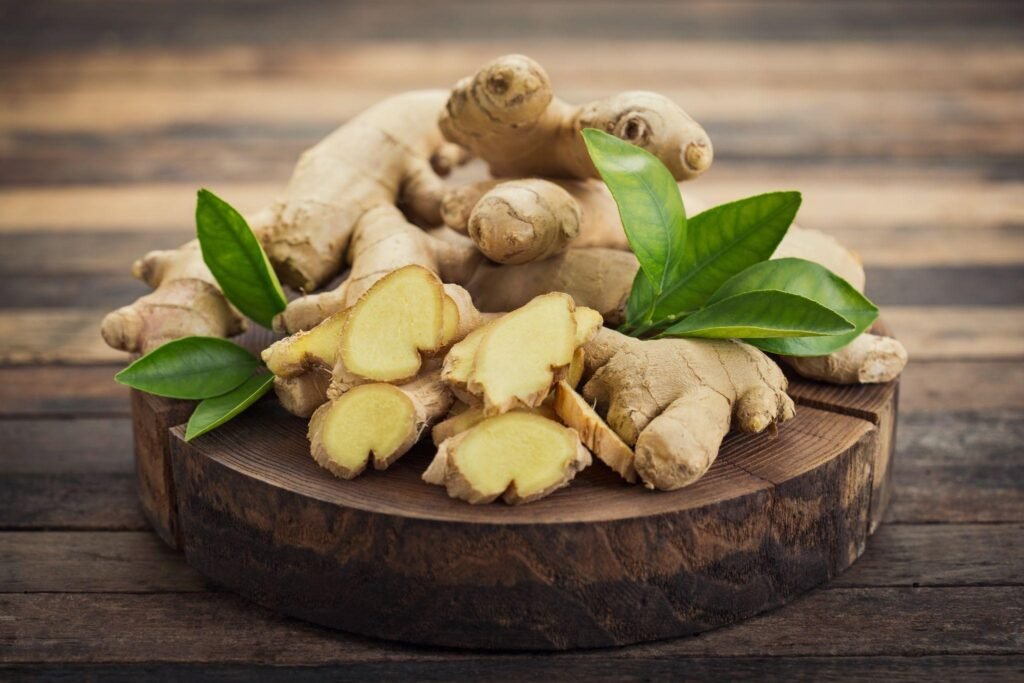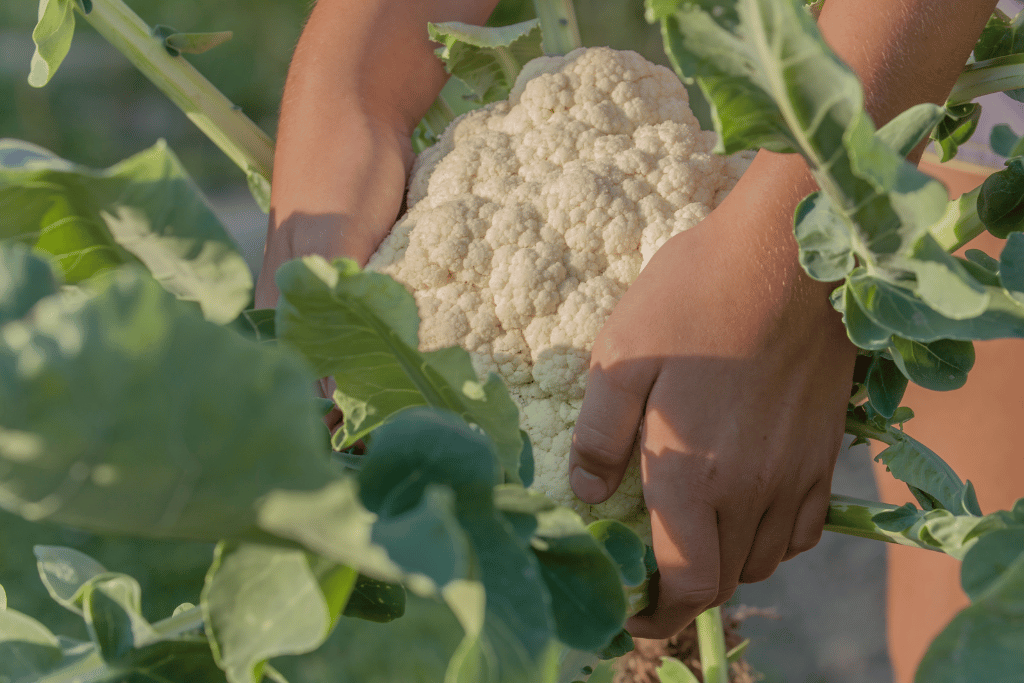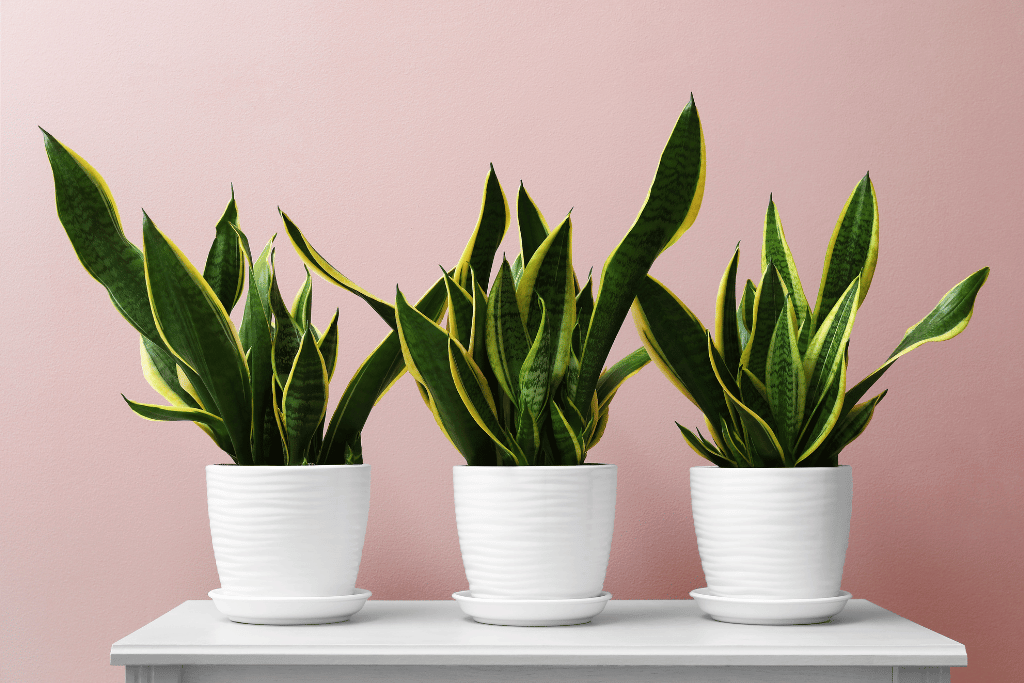
Are you sick and tired of seeing your beloved snake plant suffer in a pot that’s too small or too big? Well, fear not! I’m a plant parent myself, and I’ve had my fair share of potting mishaps.
One time I had a snake plant in a pot that was way too small, and I noticed that the plant wasn’t growing as quickly as it should be. It wasn’t until I repotted it that I saw a significant improvement in growth.
Picking the right pot for your snake plant is crucial if you want it to thrive. It’s like finding the perfect pair of shoes for a marathon runner or a comfortable bed for a sleepy cat- you just gotta get it right!
So, let’s slither into the world of choosing the best pot for snake plants.
How Do I Choose the Best Pot for Snake Plants?
So, what should you consider when selecting pots? Well, size matters. You don’t want a pot that’s too small, suffocating your plant’s roots and stunting its growth. On the flip side, a pot that’s too big can lead to overwatering and root rot- not a pretty sight, trust me.

When it comes to materials, there are plenty of options out there, from plastic to ceramic to terracotta. It’s all about finding what works best for you and your plant. If you are on a budget, plastic pots are affordable and lightweight but might not be as aesthetically pleasing as a fancy ceramic pot.
Don’t forget about drainage holes! They’re like the exit doors for your plant’s excess water. Without them, your plant might drown and kick the bucket. We don’t want that, do we?
Your snake plant deserves to look good while it’s doing its thing. So go ahead and choose a pot that complements its style.
Best Pots for Tall Snake Plants

Let’s talk about those tall, dark, and handsome snake plants. These beauties grow up to six feet tall, so giving them a pot that can handle their size and style is essential.
First up is their growth pattern. These guys like to spread their roots out, so a deep pot is a must. You don’t want your snake plant to feel cramped, so give it some room to breathe.
When it comes to size, a pot that’s at least 10-12 inches deep and 12-14 inches wide is ideal for a mature snake plant.
And don’t skimp on the materials. These big guys need a sturdy pot that won’t tip over at the first sign of a breeze.
Plastic pots can be a great option if you’re on a budget. They’re lightweight and won’t break the bank. To improve your pot collection, go for a fancy ceramic or terracotta pot. These guys come in all shapes and sizes, so you’ll surely find one that suits your fancy.
Personally, I love the look of a tall snake plant in a matte black ceramic pot. It’s sleek and modern, and it makes a statement in a room.
But hey, don’t let me influence your style choices- find a pot that suits you and your plant.
Best Pots for Small Snake Plants
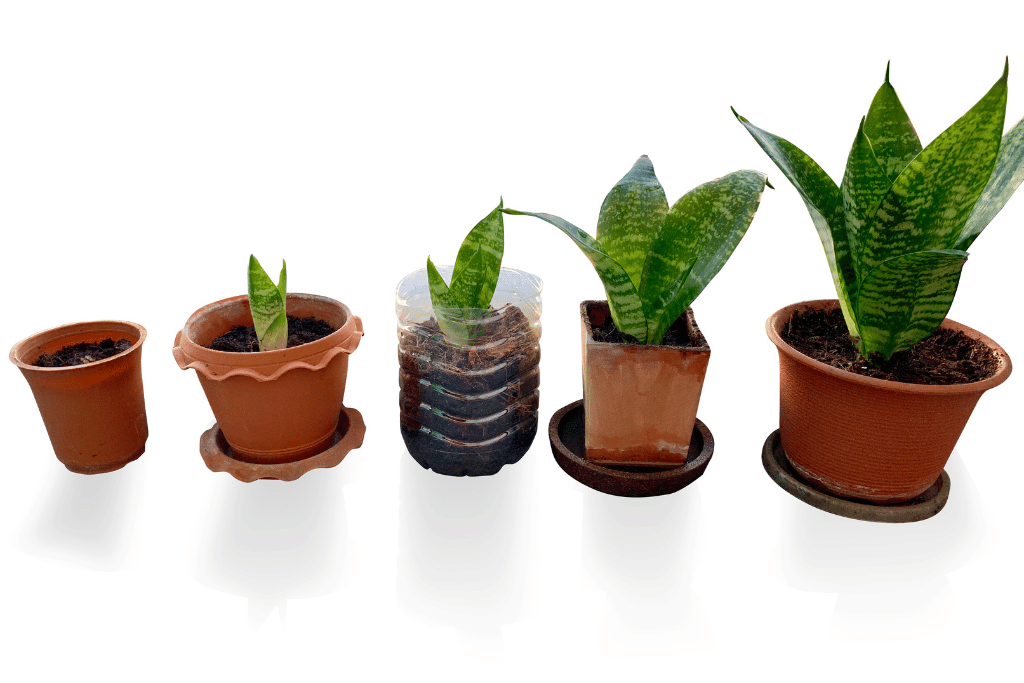
Let’s talk about those adorable little snake plants! These guys may be small but they pack a punch in the cuteness department. And just like their taller counterparts, they deserve a pot that suits their size and style.
Small snake plants typically grow to be around 6-8 inches tall, so a pot that’s 4-6 inches in diameter is ideal. You don’t want to give them too much space, or they might feel lost in their pot. And let’s be real, no one likes feeling lost and alone, not even plants!
When it comes to materials, plastic pots are always a reliable option for small snake plants. They’re affordable, lightweight, and come in a variety of colors. But if you want to elevate your plant game, consider a ceramic or terracotta pot. These guys can add a touch of sophistication and style to any room.
I love a small snake plant in a patterned ceramic pot. It’s a great way to add some personality and charm to a space, and it really makes the plant stand out. Thats just my opinion though, its important for you to choose a pot and style that suits your needs.
In terms of growth patterns, small snake plants like to keep things tight and cozy. They don’t need much space to thrive, so keep their pot snug and secure. And remember, just because they’re small doesn’t mean they’re any less important. These little guys have a lot of personality and can bring great joy to your home.
Additional Considerations for Choosing the Best Pots for Snake Plants

You might think that the only important factor when choosing a pot is size and material, but let me tell you, drainage holes are the unsung heroes of plant pots. When you water your snake plant, the excess water needs a place to go. If your pot doesn’t have drainage holes, water will just sit in the soil, drowning your snake plant roots and causing all sorts of problems. No one likes soggy feet, not even plants!
So, when shopping for a new pot, ensure it has drainage holes. Trust me; your plant will thank you for it. And if you find a pot that you absolutely love- no stress, you can always drill them yourself. Just be sure to use a pot with a thick bottom to avoid cracking.
Honestly, I can’t count the number of times I’ve bought new pots, and the holes haven’t been drilled in the factory- it’s a common occurrence to poke the holes through myself! Always check before getting carried away with the excitement of potting up your new plant that the holes are fully drilled through.

Just because drainage holes are essential doesn’t mean you must sacrifice style. There are plenty of pots out there that are functional and fashionable. When choosing a pot, consider the plant’s aesthetic. Is it sleek and modern, or does it have a more bohemian vibe? You want to select a pot that compliments the plants’ personality and style. And don’t be afraid to mix and match- a variety of pots can add interest and texture to a room.
Personally, I like to play with contrasts. A spiky succulent in a soft pastel ceramic pot? Yes please! A trailing plant in a geometric pot? Sign me up! The possibilities are endless, so don’t be
afraid to get creative.
Materials Pros and Cons
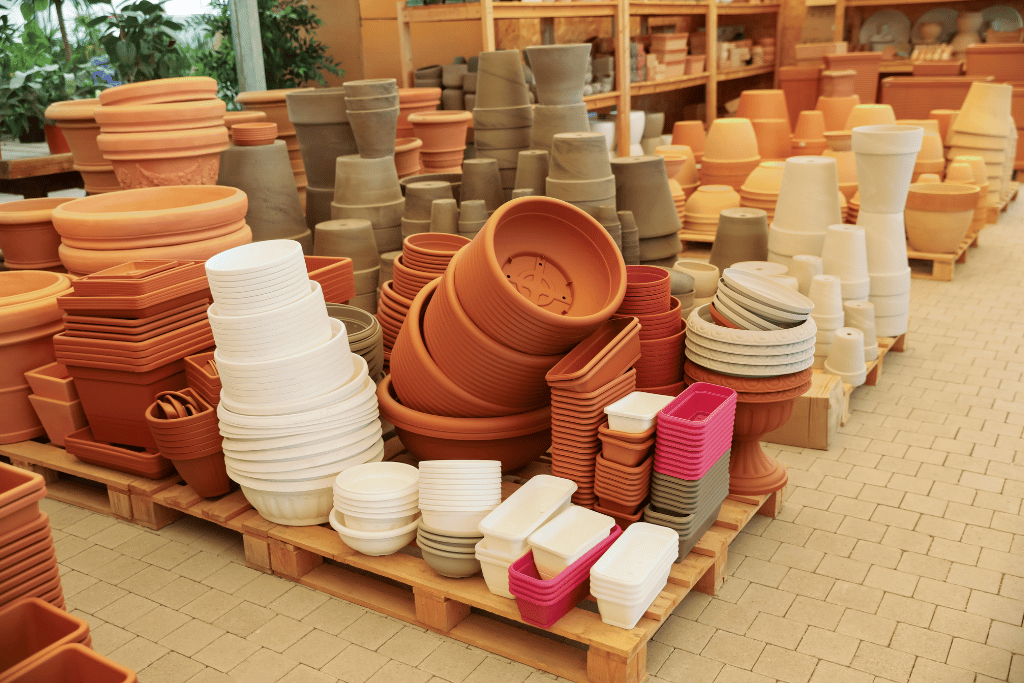
The material you choose for your snake plant will depend on your personal preferences and needs of your plant but here are a few key points to consider when selecting the suitable material:
Plastic
Pros:
- Lightweight and easy to move
- Affordable
- Available in a wide variety of colors and designs
- Retains moisture well
Cons:
- Not as durable as other materials
- Can look cheap or unattractive
- Can release chemicals into the soil
Ceramic
Pros:
- Durable and long-lasting
- Available in a wide range of colors and styles
- Retains moisture well
- Provides good insulation for plants
Cons:
- It can be heavy and difficult to move
- More expensive than plastic or terracotta
- Can break or chip easily
Terracotta
Pros:
- Breathable material that promotes airflow and drainage
- Affordable
- It provides a rustic natural look
- Suitable for plants that prefer drier soil
Cons:
- It can be brittle and prone to breaking
- Requires regular cleaning to avoid mineral build-up
- It can dry out soil too quickly in hot or dry climates
With all these factors in mind, you can narrow down the perfect material to choose for your snake plant pot.
How to Pot Snake Plant

After getting your snake plant home and choosing the perfect pot, it’s time to show it off in its new home!
Potting up a snake plant can be done in a few simple steps; here’s a breakdown for you:
- Prepare the potting mix: Use a well-draining soil mix containing peat moss, perlite, and sand. You can also use cactus or succulent soil to provide good drainage.
- Remove the plant from the old pot: Gently tap the sides of the pot to loosen the soil and carefully lift the plant out. If the plant is root-bound, gently tease the roots apart with your fingers to encourage new growth.
- Add soil to the new pot: Add enough soil to the new pot so that the top of the plant’s root ball sits about an inch below the pot’s rim.
- Place the plant in the new pot: Position the plant in the center of the pot and fill in the gaps with soil, ensuring the roots are entirely covered.
- Water the plant: Water the plant thoroughly until the soil is moist but not waterlogged. Wait for the excess water to drain from the bottom of the pot before placing it back in its desired location.
- Maintain the plant: After potting up your snake plant, make sure to keep it in a well-lit area and only water it when the top inch of the soil feels dry to the touch. You can also fertilize it once every few months to promote healthy growth.
Don’t be Square Pick a Pot with Flair!
To sum things up, choosing the right pot for your snake plant can make all the difference in its health and aesthetic appeal. Consider the plant’s size, growth patterns, and personality when selecting a pot, and don’t forget about the importance of drainage holes.
Whether you opt for a plastic, ceramic, or terracotta pot, ensure it complements your plant’s style and adds some interest to your space. With the right pot, your snake plant will thrive and bring a touch of green to your home.
So go ahead and pick the perfect pot for your leafy friend- your plant will thank you for it!
Ready to Take your Plant Parenting Skills to the Next Level?
Check out our Planting 101 pages to learn more about how to keep your leafy friends healthy and thriving.
From tips on watering and soil to advice on pruning and fertilizing – we’ve got you sorted. Join our community of plant enthusiasts and share your successes (and struggles!) with fellow green thumbs. Happy planting!
FAQ About the Best Pots for Snake Plants
Do snake plants need deep pots?
No, Snake plants don’t need deep pots as they have a lateral root system which means the roots spread outwards rather than downwards.
Do snake plants like wide or deep pots?
Wide, shallow pots are recommended for snake plants due to their shallow root systems. A deep pot will trap too much moisture around the roots, which could cause root rot.
What is the best snake plant planter?
Terracotta plant pots are favored among gardeners as the natural material is porous and allows the soil to dry out more quickly than plastic pots.
Do snake plants need pots with holes?
Snake plants need drainage holes for the excess water to escape. If the soil becomes waterlogged, you run the risk of the roots rotting, and it can also be an excellent place for fungi and pests to inhabit.


